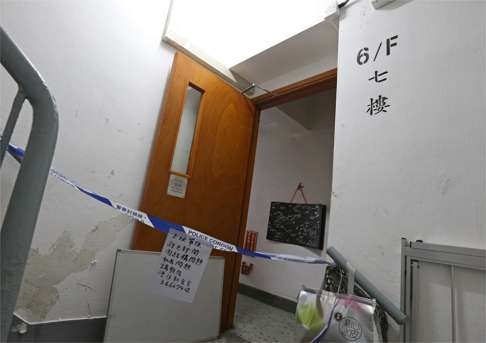
Annual inspection failure could have led to delays and blunders in putting out fire in Hong Kong Island’s Wan Chai
Blaze highlights vulnerability of 12,000 old-style buildings as less than 1 per cent had their fire protection equipment upgraded
The failure of owners to carry out annual inspections of fire equipment could have led to delays and blunders in Tuesday’s third-alarm fire in Wan Chai, the Post has learned.
The blaze also highlighted the vulnerability of 12,000 old-style buildings, as less than 1 per cent had their fire protection equipment upgraded in the decade since a law to enhance fire equipment came into effect.
Search under way for cause of third-alarm fire in Hong Kong residential building
The revelation came after the blaze broke out in Kai Ming Building on Hennessy Road. Unstable water pressure in the building delayed fire operations as firefighters struggled to collect water from street hydrants. The blaze forced the closure of major roads on Hong Kong Island for three hours.
“The fire service installation contractor of the building should have conducted an inspection by the end of March this year and reported to us. But we have not received a report so far,” the assistant director of the Fire Services Department, Joseph Leung Wai-hung, told the Post.
“The fire hydrants coincidentally malfunctioned when the fire broke out on Tuesday. We will take follow-up action against the responsible party.”
Debris was still seen littering the lobby of the eighth floor of Kai Ming Building, while a unit on the same floor was burned to cinders, with little for the residents to salvage. Police said they were still looking into the cause of the blaze.
Former Fire Services director Anthony Lam Chun-man, who is now an adviser to the Hong Kong Institution of Engineers, pointed out one task of the annual inspection was to check if water pressure was sufficient to douse flames.

Lam also insisted it was the duty of every building owner or corporation to hire a registered contractor for an inspection of the fire equipment every 12 months.
Under the law, those who fail to comply with the regulations are liable to a maximum fine of HK$50,000.
Apart from inspection failures, the half-century-old building also did not upgrade fire service equipment even though the department had asked it to do so since 2008.
Leung said the owners’ corporation had delayed the work several times and did not submit a proposal until March last year. The improvement work was under way and was due to be completed by the end of the year.
Under the Fire Safety Ordinance, which came into force in 2007, buildings constructed in or before March 1987 were required to upgrade their fire services installations and equipment.

But figures from the department showed that among 12,000 buildings aged 29 or over, only 100 had upgraded their equipment. The authority pursued only 46 prosecutions with fines totalling HK$480,000.
“Many old buildings delay the upgrade as they have problems forming owner corporations or getting money. We allow the delays as long as they give good reasons,” Leung said.
Statistics from the Home Affairs Department suggest out of 40,000 private buildings in Hong Kong, around 5,800 are so-called “three-nil” buildings, meaning they have no owners’ corporation, residents’ organisation or property management firm.
Democratic Party legislator James To kun-sun, who was involved in scrutinising the law, dismissed criticism that the ordinance had created inconvenience for the public, saying the law was enacted with “good intentions“.
He also disagreed that the department’s authority to extend deadlines was a loophole as the regulations should be suited to real-life situations.


